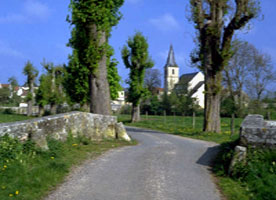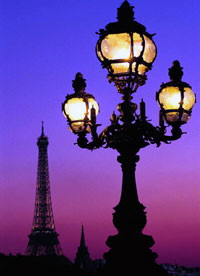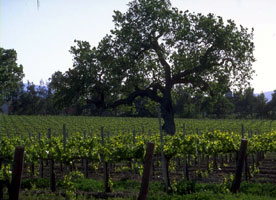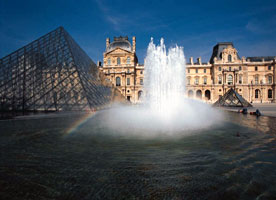 French Cuisine French Cuisine At the start of the twentieth century, French cuisine gained supremacy throughout the world. Generating from the history of influence it has distinguished itself as the true culinary melting pot. Since the introduction of the grapevine by the Greeks and the refined habits of great cookery by the Romans, the advances of technique and applications in French cuisine and cooking have far surpassed those of any other. The great classics of European cuisine were incorporated early on, but the French are now discovering the affluence of Scandinavian, Indian and Chinese cookery, to name a few. In turn, the introduction and influence of French cookery has also been felt by other culinary traditions, with the result of exotic and foreign restaurants flourishing.  In Paris, The oldest market was established in the twelveth century in the heart of the city. Just the same as then, the art and skill of selecting the right ingredients, and only fresh, top quality ingredients, is still practiced. All over France, markets take place on fixed days once or twice a week, in open air or market buildings. No matter how small a purchase, the customers come to obtain the best goods there are available careful inspection of the foods which the traders have on offer is still part of the shopping process, but, never more so as with the introduction of the nouvelle cuisine movement of the early nineteen seventies. The encouraging of a simpler and more natural presentation of food along with the use of dry cooking, grilling, steaming, etc., but quickly cooked food to retain its maximum nutritional value. The result of which are the uses of crisper vegetables, showing off the retained colors and elegantly trimmed vegetable, to keep airy mousses, and thinly sliced meats. In Paris, The oldest market was established in the twelveth century in the heart of the city. Just the same as then, the art and skill of selecting the right ingredients, and only fresh, top quality ingredients, is still practiced. All over France, markets take place on fixed days once or twice a week, in open air or market buildings. No matter how small a purchase, the customers come to obtain the best goods there are available careful inspection of the foods which the traders have on offer is still part of the shopping process, but, never more so as with the introduction of the nouvelle cuisine movement of the early nineteen seventies. The encouraging of a simpler and more natural presentation of food along with the use of dry cooking, grilling, steaming, etc., but quickly cooked food to retain its maximum nutritional value. The result of which are the uses of crisper vegetables, showing off the retained colors and elegantly trimmed vegetable, to keep airy mousses, and thinly sliced meats.
While not forgeting the wisdom of their predecessors, these new cooks are trying to widen their skills. All offer the diner interesting, exquisite, and strange sensations while still retaining the knowledge that cooking must always benefit from the old recipes and the precepts of classic cuisine.
 French Wines The art of cultivating the vine and making wine, was according to mythology, taught to the Greeks by Dionysus. In fact , it was undoubtedly the Egyptians who spread the art throughout the Mediterranean, particularly in Sicily, and southern Italy.
The Romans inherited it and their immense empire derived the benefits. The Gauls were familiar with the vine well before the Roman conquest, the quality of Roman wine with new methods introduced by the conquerors, did considerable aid to viticulture.
The Gauls became excellent vine growers and may have invented the cask. The high quality of Gallic production gave such pride of place to their wines that, in 92 AD, the Roman emperor, Domitian, to protect the Roman vine grower from formidable competition, ordered half the Gallic vines be destroyed.
In the middle ages, viticulture was linked to the propagation of Christianity, each monastery producing its own wine for the Mass and therapeutic use, some working hard at improving the quality. Many famous wines of France, notably in burgundy, are still grown around what were formally monasteries.  French wines were exported to England and Scotland, the Scandinavian countries, and as far away as the near east. In this way, they acquire reputation which continued to grow until the eighteenth century. Use of bottles for maturing wines became general in the eighteenth century. French wines were exported to England and Scotland, the Scandinavian countries, and as far away as the near east. In this way, they acquire reputation which continued to grow until the eighteenth century. Use of bottles for maturing wines became general in the eighteenth century. The French revolution resulted in the parceling out among innumeral small land owners of the vineyards which had belonged to the nobility and the religious communities. In the late eighteen hundreds an insect, Phylloxera, which spread to Europe from north America, destroy the vines over the majority of European vineyards. Built up again later with vines grafted onto American rootstocks resistant to the insect. French vineyards now extend over an enormous and increasing area and wine is of major importance to the French economy. View some of our French recipes
 | Country Terrine
Difficulty Level: Medium Loaf of pork or beef liver with brandy. |
| |
|
|



